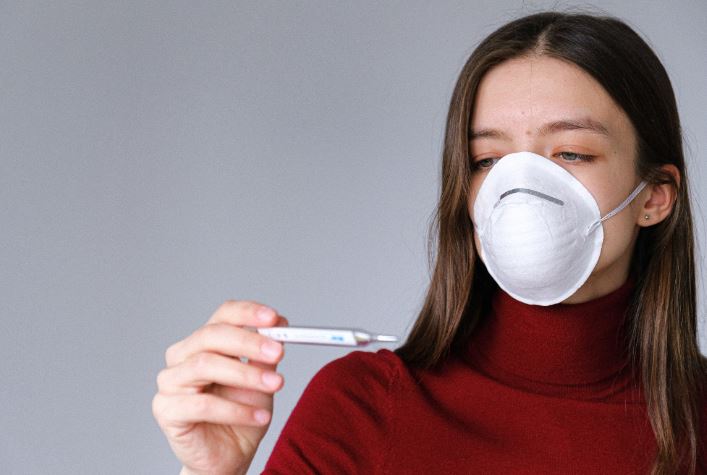August hunting and trapping opportunities
|
|
||||||
|
||||||
 |
||||||
|
||||||
| DNR COVID-19 RESPONSE: For details on affected DNR facilities and services, visit this webpage. Follow state actions and guidelines at Michigan.gov/Coronavirus. |
|
|
||||||
|
||||||
 |
||||||
|
||||||
| DNR COVID-19 RESPONSE: For details on affected DNR facilities and services, visit this webpage. Follow state actions and guidelines at Michigan.gov/Coronavirus. |

Pontiac, Michigan –Oakland County Health Division, Livingston County Health Department and Genesee County Health Department report a steep increase in COVID-19 cases in the South Lyon and Fenton areas since mid-July among individuals 15 – 19 years-old. Some of the cases reported attending large indoor and outdoor gatherings, including graduation parties and prom like events, during July.
“We need parents and young people in our community to recognize the risk they take to their own health and that of their family and friends when attending gatherings without taking precautions,” Leigh-Anne Stafford, Health Officer, Oakland County Health Division said. “We can work together across our communities to contain the spread and I urge parents to be aware of activities your kids attend.”
“When attending both indoor and outdoor gatherings, it is important to stay six feet from others and wear a mask,” Dianne McCormick, Health Officer, Livingston County health Department said. “Socializing responsibly could help quickly turn things around.”
“When individuals cooperate with Health Departments to complete contract tracing and case investigations, it goes a long way to stopping the spread of COVID-19,”John McKellar, Health Officer, Genesee County health Department said. “No one wants to be the one who spreads COVID-19 to someone who becomes very ill or dies.”
Preliminary information indicates a significant increase in cases among high school age students and those numbers could change as case investigation continues in the three counties. In Oakland County, COVID-19 cases among 15 – 19-year-olds in the South Lyon area increased from three cases during late-June to mid-July to 42 from mid-July to early August. Similar trends for this age group have been observed Countywide in Livingston and Genesee counties. For Livingston County, cases increased from three cases during late-June to mid-July to 19 from mid-July to early August and in Genesee County, cases increased from 19 during late-June to mid-July to 94 from mid-July to early August.
The three health departments are conducting case investigations to identify individuals who have potentially been exposed. Initial information has determined that 15 – 19-year-olds from Oakland Livingston and Genesee attended at least six large gatherings.
If you attended a large gathering in the South Lyon and/or Fenton area during mid to late July and you think you are developing any of the symptoms of COVID-19 described below, call your physician or local health department. People with COVID-19 have reported a wide range of symptoms from mild to severe. Symptoms may appear 2-14 days after exposure to the virus. People with these symptoms may have COVID-19:
If you are considering attending an indoor or outdoor event, take precautions by:
There is currently no vaccine to prevent COVID-19. The best way to prevent infection is to avoid being exposed to the virus. The spread of COVID-19 can be reduced with cloth face coverings, social distancing, and staying home when sick except to get medical care.
For more information on COVID-19, for Oakland County visit www.oakgov.com/covid. Contact Nurse on Call at 800-848-5533, Monday through Friday, 8:00 a.m. – 6:00 p.m. and Saturday 9:00 a.m. – 12:00 p.m. with health-related questions. For all other COVID-19 questions, contact the COVID-19 Help Hotline at 248-858-1000 or hotline@oakgov.com. For up-to-date public health information, follow @publichealthOC on Facebook and Twitter. For Livingston County, call 517-546-9850, email: COVID19@livgov.com or visit https://www.livgov.com/health/ph/Pages/COVID19.aspx. For Genesee County call 810-424-4443 or visit www.gchd.us.
Media Contacts:
Oakland County: Bill Mullan, Oakland County Media and Communications Officer, 248-858-1048
Livingston County: Natasha Radke, Public Information Officer, 517-546-9850
Genesee County: Suzanne Cupal, Public Information Officer, 810-768-7970

FOR IMMEDIATE RELEASE
August 4, 2020
Contact: Press@Michigan.gov
Governor Whitmer Signs Executive Directive
Strengthening Enforcement of C
LANSING, Mich. — Governor Whitmer signed Executive Directive 2020-08 today to direct state departments and autonomous agency heads to review allocation of their resources to ensure that enforcement of COVID-19-related laws is a priority, such as limitations on capacity and the requirement to wear a mask when entering a Michigan business. Cases have risen over the past month—from a rolling seven-day average of about 15 cases per million on in mid-June, the low point since the peak last April, to about 50 cases per million in late July.
Without effective enforcement, Michigan will move backwards, causing individuals, businesses, and the economy to suffer. The governor’s directive therefore
“Ensuring these executive orders are enforced across the state will protect Michigan families, small businesses, and the first responders on the front lines of this crisis,” said Governor Whitmer. “This fight is not over yet. During the month of July we saw an increase in positive COVID-19 cases in every region of the state. By allocating the appropriate and needed resources, we can continue to save lives and ensure we don’t have to move backward.”
Executive Directive 2020-08 requires departments to consider violations of law when determining eligibility for licensing. This includes any violation of relevant COVID-19 executive orders or epidemic orders. If a state department or agency becomes aware of non-compliance under the law they must consider it to be presumptive evidence of a “public health hazard” or “imminent and substantial hazard to the public health” and take appropriate steps to mitigate any risk to public health and safety. This includes, but is not limited to, suspension of a license or cessation of operation of a food establishment.
Ensuring the governor’s executive orders are enforced is necessary to slowing the spread of COVID-19 and saving lives. The Michigan State Police will enforce violations of these COVID-19 related laws, such as executive orders and DHHS epidemic orders, in the same manner as any other violation of law, applying their discretion as appropriate. Departments and agencies who become aware of a violation must share that information with relevant licensing authorities, and collaborate on enforcement to ensure efficiency and effectiveness.
To view Executive Directive 2020-08, click the link below:


FOR IMMEDIATE RELEASE August 4, 2020 Media Contact: Press@Michigan.gov
President Trump Grants Governor Whitmer’s Request to Extend Michigan National Guard Through December 31 to Assist With COVID-19 The president decides to only federally fund guard activities at 75%, leaving states with additional costs
LANSING, Mich. — Today, Governor Gretchen Whitmer issued the following statement after President Trump granted her request that he authorize the use of Michigan National Guard forces for COVID-19 response through December 31, 2020. Title 32 authority, which allows Guard members to receive federal pay and benefits, was previously set to expire on August 21 due to a deadline set by the Trump Administration.
“Since COVID-19 was first discovered in our state, the Michigan National Guard has been a crucial part of our emergency response, from conducting testing and screening, distributing personal protective equipment, and assisting at food banks across the state” said Governor Whitmer. “Our dedicated guardsmen and women will continue to be a crucial part of our recovery efforts moving forward. I thank the president for granting my request, and implore him to work with Congress on a bipartisan recovery package that protects American families, frontline workers, and small business owners. The only way we will get through this is if leaders in the federal government put partisan games aside and work together to save lives.”
Governor Whitmer sent a letter to President Donald Trump on July 10th requesting that the president authorize the use of Michigan National Guard forces for COVID-19 response through December 31, 2020.
While Title 32 had been funded at 100 percent federal expense, the President has imposed a 25 percent state cost share from August 21 to December 31, 2020.
“While I am grateful for the extension, the president’s decision to federally fund Guard activities at only 75% leaves states across the country with an additional cost when we’re already facing severe holes in our state budgets. We need the president and Congress to work together in a bipartisan way to support states like Michigan.” |
FOR IMMEDIATE RELEASE
August 3, 2020
Contact: Lynn Sutfin, 517-241-2112
LANSING, MICH. Michigan Department of Health and Human Services (MDHHS) Director Robert Gordon has issued an Emergency Order requiring COVID-19 testing for agricultural and food processing employees. The order makes Michigan a national leader in COVID-19 safety protections for agricultural and migrant workers, building on Executive Orders from Gov. Gretchen Whitmer requiring workplace safety measures in meat and poultry processing plans and safe housing for COVID positive migrant workers.
“The men and women who work in our fields and food processing plants are at particular risk for COVID-19, and they need and deserve protection,” said Gordon. “Today’s order will help to reduce the spread of COVID in communities across Michigan and reduce the pandemic’s disparate impact on Latinos.”
In recent weeks, there have been 11 identified outbreaks in farms and food processing plants in Michigan. In addition, Latinos are 5 percent of Michigan’s population but represent 11 percent of COVID cases in which the individual’s ethnicity is identified.
The order requires migrant housing camp operators to provide COVID-19 testing as follows:
Employers of migrant or seasonal workers, meat, poultry and egg processing facilities and greenhouses with over 20 employees on-site at a time to provide COVID-19 testing as follows:
“The department will work with employers and housing operators to ensure timely reporting of testing data and access to PPE so that together we can prevent further viral spread,” Gordon said.
“Ensuring the health and safety of Michigan’s essential food and agriculture workers is paramount to keeping our food supply chain moving,” said Gary McDowell, director of the Michigan Department of Agriculture and Rural Development. “These workers are our frontline staff who are a vital part of bringing our food from farm to plate.”
“It is critical that we keep our workers and their families across the food and agriculture industry safe and healthy,” said John Cakmakci, president of UFCW Local 951. “I applaud Directors Gordon and McDowell for their efforts to protect the people of Michigan and our economy.”
Employers and housing operators must complete a plan by Aug. 10 for how they will conduct testing in compliance with this order. Completion of baseline testing and implementation of ongoing testing is required no later than Aug. 24.
Employers and housing operators have several options for completing the required testing, including contracting with a medical provider, occupational health provider or laboratory to arrange a testing program; requesting state assistance to conduct testing; or utilizing testing resources in the broader community. The state will provide testing support for employers or housing operators as its capacity allows and assist facilities in identifying other sources of testing capacity as needed.
MDHHS also released a guidance document for employers providing step-by-step information on how employers can complete testing and highlighting resources like grant funding and insurance coverage through Medicaid that can provide financial support for testing.
COVID positive and exposed residents would be required to isolate or quarantine until meeting the return-to-work criteria from the Centers for Disease Control and Prevention. MDHHS will be partnering with Community Action Agencies in impacted communities in order to provide food, housing, and economic support for workers who lose income due to testing.
Failure to comply with this order may result in the issuance of a civil monetary penalty under the authority of MCL 333.2262.
Information around this outbreak is changing rapidly. The latest information is available at Michigan.gov/Coronavirus and CDC.gov/Coronavirus.
|
|||||
|